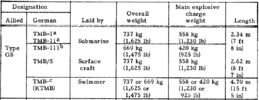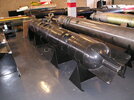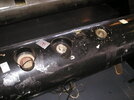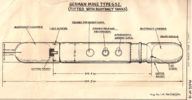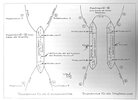British Ordnance Collectors Network
You are using an out of date browser. It may not display this or other websites correctly.
You should upgrade or use an alternative browser.
You should upgrade or use an alternative browser.
Clock for Torpedominen
- Thread starter Antoon
- Start date
Oeps, Not available. Will ask the museum if they have a picture of the bottom.It does look a lot like a regular UES (Uhrwerkseinschalter), are there any markings on the baseplate ?
Best regards,
Zünder
Is there documentation available?
Greetings
Yes,Oeps, Not available. Will ask the museum if they have a picture of the bottom.
Is there documentation available?
Greetings
see: https://www.scribd.com/document/734410407/Op-1673a-German-Underwater-Ordnance
Starts at page 235
There's also a Kriegsmarine manual: M.Dv. Nr. 658, but i am still looking for that one.
A good book to have is Wolfgang Thamm's "Einsatzfähige deutsche Fernzündgeräte", which describes german WW2 fuzesystems for naval and aircraft mines as well as clocks like the UES.
It was/is published by comprints.de, ISBN 3-86611-108-8.
Groeten,
Zünder
Hello,
Who has information about this clockwork as used bij German Frogman in there "Torpedominen" during the attack on the Waal-river bridges in the Netherlands, after Operation Market Garden?
Thanks for sharing, the To-Minen is a tough subject.
According to what I've learnt, a few models were designed in the period ranging from June to October 44; the late Nipolit model used to be fitted with Italian 10hrs clockworks (the same fitted on the minor charges) but I've found also early references about 6hrs devices, which might well be yours. May I kindly ask who links this devices to the To-Minen?
Someone who is writing a book about the attacks by Sondereinsatzgruppen on the Waal-river bridges in September 1944.Thanks for sharing, the To-Minen is a tough subject.
According to what I've learnt, a few models were designed in the period ranging from June to October 44; the late Nipolit model used to be fitted with Italian 10hrs clockworks (the same fitted on the minor charges) but I've found also early references about 6hrs devices, which might well be yours. May I kindly ask who links this devices to the To-Minen?
As far as I know the clock is in the Liberation museum in Groesbeek (NL) and is donated by someone who defused one of these Torpedominen. Will ask for the exact story.
Are these sterilization devices right? I assume with days long delays, while Antoon's one has a hourly graduation in quarters with a safety of 30 minutes.
This is the first time I've found an evidence of the 6hrs clockwork, encased into the original device. I'm wondering if this was fitted before the introduction of the Italian clockwork or if both were fitted together, one being the sterilizer. Looking forward for Antoon's story.
This is the first time I've found an evidence of the 6hrs clockwork, encased into the original device. I'm wondering if this was fitted before the introduction of the Italian clockwork or if both were fitted together, one being the sterilizer. Looking forward for Antoon's story.
Hereby a picture of the bottom of the Clockwork.It does look a lot like a regular UES (Uhrwerkseinschalter), are there any markings on the baseplate ?
Best regards,
Zünder
Attachments
New information. Family from a former member of a British disposal team that had redered safe a German Torpedo Mine at there Waal bridge at Nijmegen in 1944 told my contact the following:
I believed the charge to be a magnetic mine Type C which has been modified with a flotation chamber at each end.
So a GC Mine (Luftmine B) with two floating chambers. has someone a picture?
I believed the charge to be a magnetic mine Type C which has been modified with a flotation chamber at each end.
So a GC Mine (Luftmine B) with two floating chambers. has someone a picture?
New information. Family from a former member of a British disposal team that had redered safe a German Torpedo Mine at there Waal bridge at Nijmegen in 1944 told my contact the following:
I believed the charge to be a magnetic mine Type C which has been modified with a flotation chamber at each end.
So a GC Mine (Luftmine B) with two floating chambers. has someone a picture?
Antoon, I'm not aware of any picture of the to-minen, neither from books, manuals or archives. I've actually looked for one for many years.
As already mentioned, the system underwent a development period and different models were devised and used during the operations.
The early idea was to adapt a TMB mine case (model 2 or 3) with two floating ends, the first models were designed for sea water and used to sink due to lack of buoyancy in riverine operations, dimensions and shape changed, from a cylindrical system the last developement devised a shape like the hull of a ship, described in the documents as pointed, flat on top and rounded at the sides. The explosive was Nipolit, 600kg in the system used during the Waal operation, documents states that clockwork was the Italian 10 hours which the Operators used to be familiar with during the training in Italy, also adopted on the minor charge (the Sprengfische). It is yet unclear which 10 hours clockwork was actually fitted on the to-minen as the said device comed with three different cases. It is also unclear if a second device was fitted. I've found a reference also to a 6hrs clockwork but it is unclear which model used to be fitted with it.
In my opinion more context is needed, during the Waal operation one to-minen stuck on a sand bank and was indeed rendered safe, unfortunately I don't have the report of that activity, it must be buried in some generic file at TNA. The Royal Navy Minewarfare & Clearance Diving Officers' Association has published a list, not comprensive but a good starting point, of the awards for ordnances disposal, is it possible to know the name of the man you're on about?
Attached a sketch of commander Hummel of the to-minen configuration during the Waal operation, the mine that was rendered safe was one of the two destined to the road bridge.
Attachments
Thank you very much for the info. I Will ask for the name. Greetings AntoonAntoon, I'm not aware of any picture of the to-minen, neither from books, manuals or archives. I've actually looked for one for many years.
As already mentioned, the system underwent a development period and different models were devised and used during the operations.
The early idea was to adapt a TMB mine case (model 2 or 3) with two floating ends, the first models were designed for sea water and used to sink due to lack of buoyancy in riverine operations, dimensions and shape changed, from a cylindrical system the last developement devised a shape like the hull of a ship, described in the documents as pointed, flat on top and rounded at the sides. The explosive was Nipolit, 600kg in the system used during the Waal operation, documents states that clockwork was the Italian 10 hours which the Operators used to be familiar with during the training in Italy, also adopted on the minor charge (the Sprengfische). It is yet unclear which 10 hours clockwork was actually fitted on the to-minen as the said device comed with three different cases. It is also unclear if a second device was fitted. I've found a reference also to a 6hrs clockwork but it is unclear which model used to be fitted with it.
In my opinion more context is needed, during the Waal operation one to-minen stuck on a sand bank and was indeed rendered safe, unfortunately I don't have the report of that activity, it must be buried in some generic file at TNA. The Royal Navy Minewarfare & Clearance Diving Officers' Association has published a list, not comprensive but a good starting point, of the awards for ordnances disposal, is it possible to know the name of the man you're on about?
Attached a sketch of commander Hummel of the to-minen configuration during the Waal operation, the mine that was rendered safe was one of the two destined to the road bridge.
The officer who had rendered safe the Torpedomine was temporary lieutenant RNR John Bridge, a Bomb and Mine Disposal officer, assisted by 260 Field Coy R.E. to tow away the charge from the bridge.Thank you very much for the info. I Will ask for the name. Greetings Antoon
Thanks, a well known officer, the IWM preserves his diaries and medals, his oral hisotry talks briefly about the Waal mine (between reel 3 and 4) without giving much details. The diaries might contain a detailed account.
I was aware of the oral history, but thanks anyway. Do you know the diary number at TNA?Thanks, a well known officer, the IWM preserves his diaries and medals, his oral hisotry talks briefly about the Waal mine (between reel 3 and 4) without giving much details. The diaries might contain a detailed account.
The diaries are at the IWM not at TNA, the IWM catalogue number is Documents.18081
https://www.iwm.org.uk/collections/item/object/1030020450
The content description of the diaries covers what we are looking for so hopefully should contain a detailed description of the mine and an account of the activity:
[edit]
It might worth a shot also this file, I know there are accounts of riverine operations in there: https://discovery.nationalarchives.gov.uk/details/r/C11199840
https://www.iwm.org.uk/collections/item/object/1030020450
The content description of the diaries covers what we are looking for so hopefully should contain a detailed description of the mine and an account of the activity:
Sent to Antwerp to work on harbour clearance in September 1944, Bridge found himself summoned to deal with a number of specially designed charges the Germans had floated down stream on the River Waal, one of which was lodged against the pier at the Nijmegen end of the road bridge, holding up the advance of General Brian Horrocks's 30 Corps.
[edit]
It might worth a shot also this file, I know there are accounts of riverine operations in there: https://discovery.nationalarchives.gov.uk/details/r/C11199840
Last edited:

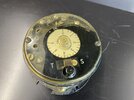
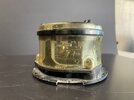
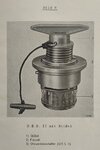
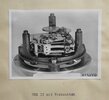
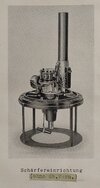
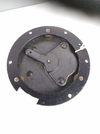
![DSCN1005[1].JPG DSCN1005[1].JPG](https://www.bocn.co.uk/data/attachments/180/180511-8c37e5180125d9109126ced7f0c0ae63.jpg)
